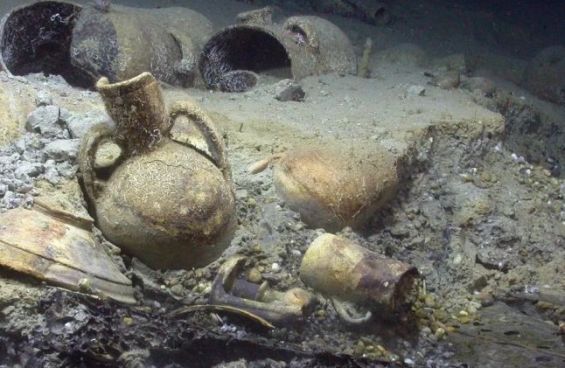A group of wreck-hunters has discovered an old pirate ship off the coast of Morocco. They believe it to be a 17th-century Barbary coast pirate ship that sailed from North Africa to prey in the Mediterranean.
The wreck is the first of its kind to be discovered near the Barbary coast, a name given to the coastal regions of central and western North Africa, or more specifically, the Maghreb and the Ottoman borderlands consisting of the regencies in Algiers, Tunis, and Tripoli, as well as the Sultanate of Morocco from the 16th to 19th centuries. The term originates from an exonym for the Berbers and is associated with Barbary pirates who operated in the Mediterranean, raiding European ships and enslaving their passengers.
The corsair wreck, located in deep water in the Straits of Gibraltar, about midway between Morocco and Spain, is «the first Algiers corsair found in the Barbary heartland», maritime archaeologist Sean Kingsley and the editor-in-chief of Wreckwatch magazine, which released details about the wreck in a new issue, told Live Science on Monday.
The vessel underwater was found heavily armed and is believed to have been heading to the Spanish coast when it sank, wreck-hunters said. The ship was also carrying pots and pans, believed to be made in Algiers, to camouflage its appearance and be perceived as a normal trading ship. The pirates probably used it to attack other ships and capture people, the same source added.
Corsair history in North Africa
The corsair shipwreck was first located in 2005 by a Florida-based company called Odyssey Marine Exploration (OME) during a search for the remains of the 80-gun English warship HMS Sussex, which was lost in the area in 1694. «As so often happens in searching for a specific shipwreck, we found a lot of sites never seen before», Greg Stemm, the founder of OME and the expedition leader, told Live Science.
Details of the ship sunk off Morocco have only been released now in a new article by Stemm in Wreckwatch, following extensive historical research, the same source added.
The sunken ship lies on the seafloor in the Strait of Gibraltar, at a depth of about 830 meters. Live Science indicates that the ship was a 14-meter-long tartane, designed to have a low profile when sailing near other ships.
«I've seen tartanes described as 'low-level pirate ships,' which I like», Kingsley said. To explore the sunken ship, the hunters used a remotely operated vehicle (ROV), revealing that it carried four large cannons, 10 swivel guns, and many muskets for its crew of about 20 pirates. «The wreck neatly fits the profile of a Barbary corsair in location and character», Kingsley said. «The seas around the Straits of Gibraltar were the pirates' favorite hunting grounds, where a third of all corsair prizes were taken».
Stemm told the same source that the ship also had a «spyglass», an ancient type of telescope. «Throw into the sunken mix a collection of glass liquor bottles made in Belgium or Germany, and tea bowls made in Ottoman Turkey, and the wreck looks highly suspicious», he said. «This was no normal North African coastal trader».
The discovery of this ship speaks volumes about the history of North Africa, where corsairs from Morocco, Algeria, Tunisia, and Tripoli terrorized the Mediterranean and the Atlantic, raiding ships and enslaving people.
They even fought a series of wars against the United States, Sweden, and Sicily because of piracy. Morocco was also home to the first republic founded by pirates. Although short-lived, the Sale Republic’s main commercial activities were the Barbary slave trade and piracy during the 17th century.




 chargement...
chargement...











